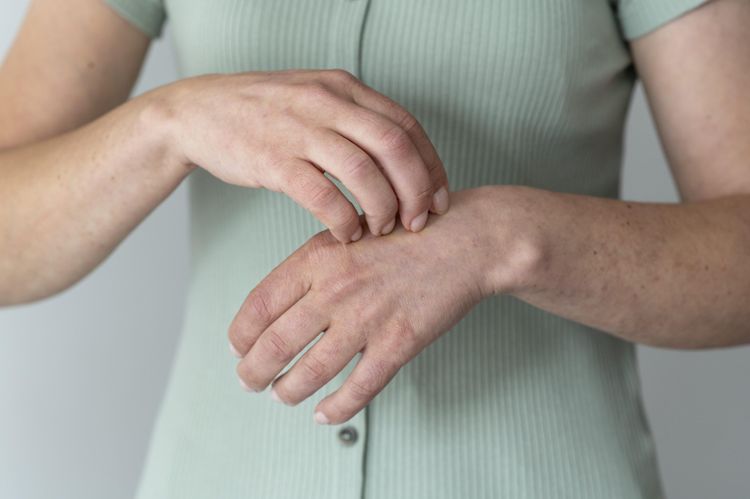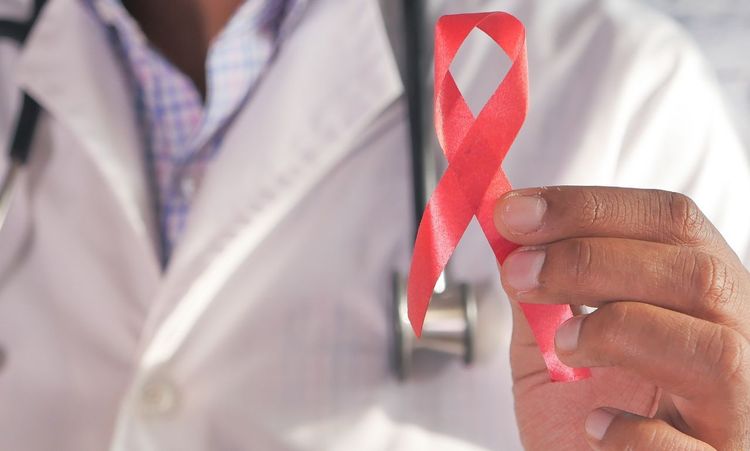Plaque psoriasis affects millions of people worldwide. Its visible plaques, which most commonly appear on the scalp, elbows, knees, and lower back, can cause physical discomfort and emotional distress. With a range of treatment modalities available, understanding the underlying causes and the most up-to-date methods to manage this condition is essential.
Understanding Plaque Psoriasis
What Is Plaque Psoriasis?
Plaque psoriasis is the most common type of psoriasis. It occurs when the immune system mistakenly accelerates the production of skin cells, causing an accumulation of cells on the surface. These build up into red, scaly patches called plaques, which can be itchy, painful, and sometimes prone to cracking or bleeding.
Causes and Triggers
The exact cause of plaque psoriasis is not completely understood. Researchers believe it results from a combination of genetic predisposition and environmental factors. Some common triggers include:
- Stress: Emotional or physical stress can precipitate flare-ups.
- Injury: Cuts, scrapes, or even sunburn can trigger the Koebner phenomenon, where new plaques develop at the site of skin injury.
- Infections: Particularly streptococcal throat infections can trigger guttate psoriasis, which may evolve into plaque psoriasis.
- Medications: Certain drugs like beta-blockers, lithium, and antimalarials may exacerbate the condition.
- Lifestyle Factors: Smoking, alcohol consumption, and obesity can also worsen psoriasis.
Impact on Daily Life
Beyond physical symptoms, plaque psoriasis can have profound emotional and social impacts. People with psoriasis may experience self-consciousness, anxiety, or depression, highlighting the importance of a holistic approach to treatment that addresses both physical and mental health.
Treatment Options for Plaque Psoriasis
Effective management of plaque psoriasis often involves a multi-pronged approach. Treatments can be divided into several categories, including topical agents, phototherapy, systemic medications, and biologics. The choice of therapy depends on the severity of the condition, the areas affected, patient preferences, and potential side effects.
Topical Treatments
Topical treatments are usually the first line of defense, particularly for mild to moderate cases. They work directly on the affected skin and can reduce inflammation, slow cell turnover, and remove scales.
Topical Corticosteroids
Topical steroids are among the most commonly prescribed treatments. They reduce inflammation, relieve itching, and help shrink plaques. These steroids vary in potency:
- Mild Steroids: Often available over the counter (e.g., hydrocortisone) for small patches.
- Stronger Steroids: Prescription-strength formulations are used for more severe areas, but long-term use can lead to side effects like skin thinning or stretch marks.
Usage Tip: Apply as directed by a dermatologist, and use them only on affected areas to minimize side effects.
Vitamin D Analogues
Vitamin D analogues (such as calcipotriene and calcitriol) slow down the rapid growth of skin cells. They can be used alone or in combination with steroids:
- Combination Therapy: Using vitamin D analogues with steroids may improve outcomes and allow for lower doses of steroids.
Usage Tip: These creams are typically applied once or twice daily. If irritation occurs, reduce the frequency of application.
Retinoids and Other Topicals
Topical retinoids like tazarotene work by normalizing skin cell production but may cause skin irritation. Other nonsteroidal options include:
- Coal Tar: A traditional remedy that can reduce scaling and inflammation.
- Anthralin: A synthetic compound that can slow cell turnover but may stain the skin and fabrics.
- Calcineurin Inhibitors: Often used off-label for sensitive areas like the face and skin folds.
Usage Tip: Because each topical treatment has its own side-effect profile, discussing options with a dermatologist is key to finding the best match for your skin type and severity of symptoms.
Phototherapy
Phototherapy uses ultraviolet (UV) light to slow down the overproduction of skin cells. It is especially useful for patients with widespread psoriasis or for those who do not respond adequately to topical treatments.
UVB Phototherapy
Narrowband UVB (NB-UVB) therapy is the most common form:
- How It Works: UVB light slows skin cell growth and can lead to significant improvement in plaque appearance.
- Treatment Regimen: Sessions typically occur 2–3 times per week for 6–8 weeks.
- Side Effects: Redness, itchiness, and dry skin are common, while the risk of skin cancer is low when used appropriately.
PUVA Therapy
PUVA combines a photosensitizing drug (psoralen) with UVA light:
- How It Works: Psoralen makes the skin more sensitive to UVA light, leading to reduced cell turnover.
- Usage: Typically reserved for patients who have not responded to UVB therapy.
- Side Effects: May include nausea, burning, and a higher risk of long-term skin damage or cancer.
Usage Tip: Phototherapy should always be administered under medical supervision to minimize risks.
Systemic Treatments
For moderate to severe plaque psoriasis, systemic treatments work throughout the body. They are typically used when topical treatments and phototherapy do not achieve adequate control.
Traditional Systemic Medications
These include oral or injectable drugs that suppress the immune system:
- Methotrexate: Reduces inflammation and slows cell production. Regular monitoring of liver function is necessary.
- Ciclosporin: An immunosuppressant that works quickly but is limited to short-term use due to potential kidney and blood pressure side effects.
- Acitretin: A retinoid used primarily for severe cases, though it has significant side effects and is contraindicated in women of childbearing potential.
- Apremilast: A phosphodiesterase-4 (PDE4) inhibitor that reduces inflammation and is taken orally.
Usage Tip: Systemic medications require close monitoring for side effects and are prescribed after a thorough evaluation of the patient’s overall health.
Biologic Therapies
Biologics are a newer class of systemic treatments that target specific parts of the immune system:
- How They Work: These drugs (e.g., adalimumab, etanercept, ustekinumab) are designed to inhibit specific inflammatory pathways (such as TNF-α or interleukins).
- Advantages: They often offer significant improvements in skin clearance and quality of life.
- Considerations: Biologics are typically reserved for moderate to severe cases and can be expensive. They may also increase the risk of infections due to their immunosuppressive effects.
Usage Tip: Biologics are administered via injection or infusion. Regular follow-up with your healthcare provider is essential to monitor response and side effects.
Lifestyle and Complementary Approaches
In addition to medical treatments, several lifestyle changes and complementary therapies can help manage plaque psoriasis.
Diet and Nutrition
While no specific diet cures psoriasis, a balanced, anti-inflammatory diet may reduce flare-ups:
- Whole Foods: Focus on fruits, vegetables, lean proteins, and whole grains.
- Avoid Triggers: Some people find that gluten, dairy, and processed foods exacerbate their symptoms.
- Omega-3 Fatty Acids: Found in fatty fish, these may help lower inflammation.
Tip: Keeping a food diary can help identify any dietary triggers specific to your condition.
Stress Management
Stress is a well-known trigger for psoriasis flare-ups. Techniques to reduce stress include:
- Mindfulness and Meditation: Regular practice can help manage stress and reduce flare-ups.
- Exercise: Moderate exercise not only improves overall health but may also help control psoriasis.
- Counseling or Therapy: Mental health support can be beneficial, especially if psoriasis is impacting your emotional well-being.
Skin Care Routine
Maintaining a gentle and effective skin care routine is crucial:
- Moisturizers: Use fragrance-free, emollient-rich creams to keep the skin hydrated. Products containing keratolytic agents like salicylic acid or urea can help soften scales.
- Bathing: Lukewarm baths with colloidal oatmeal or Epsom salts can soothe the skin. Avoid hot water, which can further dry out the skin.
- Sun Protection: While controlled UV exposure can be beneficial, always protect your skin from excessive sun to reduce the risk of burns and long-term damage.
Alternative Therapies
Some patients explore complementary treatments alongside conventional therapy:
- Acupuncture: May help reduce stress and improve overall well-being.
- Herbal Supplements: Some individuals find relief using herbal remedies, though it is important to consult with a healthcare provider before starting any supplement.
- Mind-Body Practices: Yoga, tai chi, and similar practices can support stress reduction and overall health.
Note: The effectiveness of complementary therapies varies widely among individuals. These should be used as adjuncts to, rather than replacements for, conventional treatments.
Managing Flare-ups and Long-Term Care
Regular Follow-Up
Psoriasis is a chronic condition that requires ongoing management. Regular check-ups with your dermatologist or healthcare provider ensure that your treatment plan remains effective and that any side effects are promptly addressed.
Monitoring for Comorbidities
People with psoriasis are at a higher risk for other conditions such as psoriatic arthritis, cardiovascular disease, and metabolic syndrome. Comprehensive care may include:
- Joint Assessments: To detect early signs of psoriatic arthritis.
- Blood Tests: Regular monitoring of cholesterol, blood sugar, and liver function, especially if you are on systemic treatments.
Personalized Treatment Plans
Because psoriasis varies greatly from person to person, treatment plans should be individualized. What works for one patient may not work for another. It’s important to work closely with your healthcare provider to:
- Adjust Treatments: Modify your regimen as your condition changes.
- Combine Therapies: Sometimes a combination of topical, systemic, and lifestyle changes offers the best outcome.
- Educate Yourself: Understanding your condition can empower you to make informed decisions about your care.
Conclusion
Plaque psoriasis is a challenging condition that can affect every aspect of life. Although there is no single cure to permanently remove psoriasis, a wide range of treatments—from topical creams and phototherapy to systemic medications and biologics—can significantly improve the appearance of plaques and ease symptoms. Equally important, lifestyle modifications such as dietary adjustments, stress management, and a consistent skin care routine can further help control flare-ups.
This comprehensive, evidence-based guide has outlined the different treatment modalities available, their mechanisms of action, and the importance of personalized care. If you are struggling with plaque psoriasis, consider discussing these options with a dermatologist who can tailor a treatment plan to your unique needs. Remember that effective management often requires patience and a multi-faceted approach.
By staying informed and working closely with your healthcare team, you can reduce the impact of plaque psoriasis on your life and enjoy a better quality of life. Always consult a qualified professional before starting or changing any treatment regimen.




